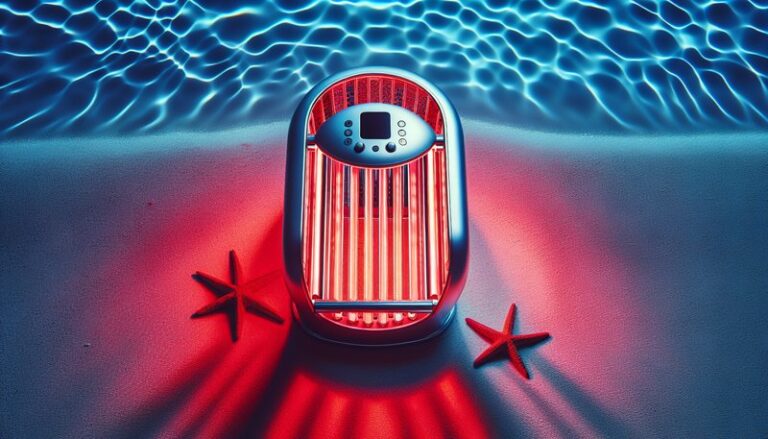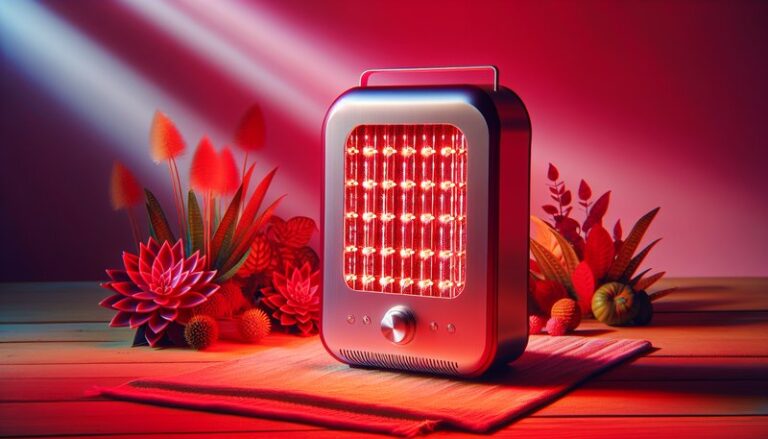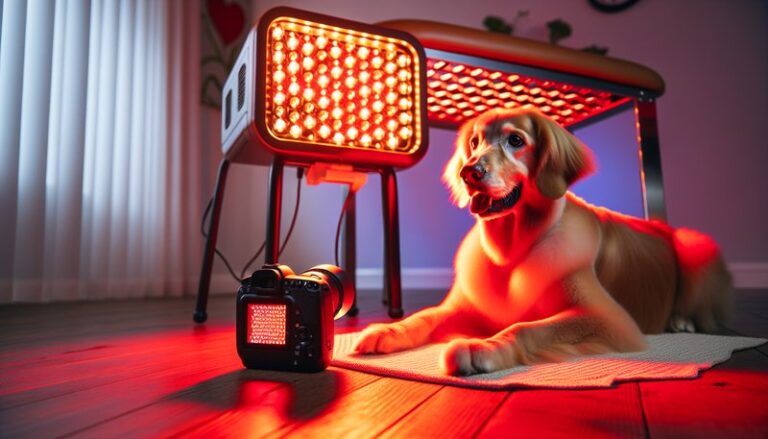What Is Red Light Therapy And How Does It Work?
Have you heard of the revolutionary therapeutic technique that harnesses the power of light to heal and rejuvenate?
In this article, we will explore the intricacies of red light therapy, its benefits, mechanisms of action, considerations, and alternatives. By the end of this read, you will have a comprehensive understanding of what red light therapy is and how it may fit into your health and wellness routine.
For more information, read Can you use red light therapy at night?
Key Takeaways
- Red light therapy utilizes low-wavelength red light to promote healing and anti-inflammatory responses in the body.
- The therapy has a range of potential benefits, including improved skin health, pain relief, and enhanced muscle recovery.
- There are various devices available for red light therapy, ranging from professional-grade equipment to at-home devices.
What is Red Light Therapy?
Red light therapy (RLT) is a non-invasive treatment that uses low-wavelength red light (typically around 600 to 900 nanometers) to penetrate the skin and tissues. This type of therapy is based on the principle that specific light wavelengths can stimulate cellular functions, promoting various health benefits.
See our comprehensive review Duration of Red Light Therapy
Initially developed for medical applications, red light therapy has gained popularity in aesthetic and wellness practices. As a form of photobiomodulation, it affects cellular processes like energy production, inflammation regulation, and collagen synthesis, making it a versatile treatment option across various health sectors.
How Does It Work?
Red light therapy works by using specific wavelengths of light to penetrate the skin and reach the cells. When the red light reaches the mitochondria within the cells, it stimulates the production of adenosine triphosphate (ATP), the energy currency of the body. Increased ATP production enhances cellular metabolism, promoting healing processes, reducing inflammation, and improving circulation.
Furthermore, the therapy can stimulate the release of nitric oxide, which has a variety of positive effects on blood circulation and tissue oxygenation. Together, these actions contribute to the overall therapeutic benefits of red light therapy.
What are the Benefits of Red Light Therapy?
Exploring the benefits of red light therapy reveals a wide array of positive effects that can enhance physical health and well-being.
Skin Healing and Rejuvenation
One of the most well-known benefits of red light therapy is its ability to improve skin health. Clinical studies suggest that RLT can reduce signs of aging, improve skin tone, and promote healing of wounds and acne scars. The increased collagen production associated with red light exposure enhances skin elasticity and reduces wrinkles.
Pain Relief and Inflammation Reduction
Red light therapy has been shown to alleviate various types of pain, including joint pain, muscle soreness, and inflammation. According to research, RLT can lower levels of cytokines, signaling molecules involved in the inflammatory response, ultimately leading to a reduction in pain and discomfort.
Enhanced Muscle Recovery
Athletes and fitness enthusiasts often utilize red light therapy to kickstart the recovery process after intense workouts. By improving cellular energy production and promoting circulation, RLT can help expedite muscle repair, reduce fatigue, and enhance performance.
Hair Growth Stimulation
Emerging studies have demonstrated that red light therapy can promote hair growth in individuals experiencing androgenetic alopecia (pattern baldness). The therapy stimulates hair follicle activity, potentially leading to thicker and fuller hair.
Mood Enhancement
Some research suggests that red light therapy can positively affect mood and reduce symptoms of depression and anxiety. The therapy’s ability to increase serotonin production may play a role in this benefit, providing an additional reason to incorporate RLT into a wellness routine.
Is it Possible to Use Red Light Therapy at Home?
Indeed, many individuals are opting for at-home red light therapy devices due to their convenience and accessibility. These devices, which can range from handheld units to larger panels, allow users to incorporate RLT into their daily routines without the need for professional treatments.
What are the Advantages of At-Home Red Light Therapy?
Using red light therapy at home offers several advantages.
- Convenience: At-home devices can be used any time that is convenient for the user without scheduling appointments.
- Cost-Effectiveness: Investing in a personal device can be a more budget-friendly option than ongoing professional treatments.
- Consistency: Regular use of at-home devices allows users to maintain a consistent therapeutic routine, which may enhance results.
What are the Disadvantages of At-Home Red Light Therapy?
While at-home red light therapy is appealing, there are some disadvantages to consider.
- Effectiveness: Professional-grade devices may deliver more potent wavelengths and intensities compared to many at-home models.
- Time Commitment: Users are responsible for taking the time to perform RLT sessions consistently for optimal results.
- Lack of Professional Guidance: Using devices without professional direction may lead to improper use, reducing the effectiveness of the therapy.
What are the Things to Consider Before Trying Red Light Therapy?
Before starting red light therapy, there are essential factors to consider to ensure a safe and effective experience.
Consultation with a Healthcare Provider
Discussing red light therapy with a healthcare professional is crucial, especially for individuals with underlying health conditions or those taking medications that may increase sensitivity to light.
Device Quality and Specifications
Invest in a reputable device that meets safety standards and delivers the appropriate wavelengths necessary for effective treatment. Research products thoroughly to ensure quality.
Session Duration and Frequency
Understand the recommended duration and frequency of sessions to avoid issues related to overexposure. Following guidelines can maximize benefits while minimizing risks.
Skin Type and Sensitivity
Consider your skin type and sensitivity when choosing to start red light therapy. Individuals with certain skin conditions should be especially careful and consult with a dermatologist.
What are the Alternatives to Red Light Therapy?
For those seeking similar benefits, various alternative therapies may provide comparable results.
Infrared Therapy
Infrared therapy, like red light therapy, utilizes light to promote healing but typically targets deeper tissues. It’s known for its benefits in pain relief, muscle recovery, and improved circulation.
Cold Laser Therapy
Cold laser therapy employs low-level laser light to reduce pain and inflammation. This therapy offers a similar approach to photobiomodulation and may be used for various medical and aesthetic conditions.
LED Light Therapy
LED light therapy uses different light wavelengths, including blue, red, and green, for various skin and health purposes. It can address issues like acne, wrinkles, and hyperpigmentation.
Acupuncture and Acupressure
These traditional therapies focus on specific pressure points in the body to promote healing and balance. They are effective alternatives for pain relief and improving overall wellness.
Conclusion: Is it Recommended to Try Red Light Therapy?
Red light therapy presents a versatile approach to health and wellness, offering benefits ranging from skin improvement to pain relief and muscle recovery. While at-home devices can be a valuable addition to one’s routine, discussing these therapies with a healthcare provider is wise to ensure safety and efficacy based on individual needs.
Frequently Asked Questions
Is red light therapy safe for everyone?
Yes, red light therapy is considered safe for most individuals. However, those with specific conditions or sensitivities should consult with a healthcare professional before starting treatment.
How long do sessions typically last?
Most red light therapy sessions last between 10 to 20 minutes, depending on the device used and the condition being treated. Always follow the manufacturer’s guidelines for optimal results.
Can I combine red light therapy with other treatments?
In most cases, red light therapy can be safely combined with other treatments, including skincare products and physical therapies. However, consult with a professional to ensure compatibility.
How soon will I see results from red light therapy?
While some people notice improvements after a few sessions, it may take several weeks of consistent use to achieve noticeable results, particularly for deeper skin conditions or injuries.
Are there any side effects of red light therapy?
Red light therapy is generally side-effect-free, but potential minor side effects could include temporary redness or irritation in some individuals. Always monitor your response to the treatment.






